| July 2022 | | | We have a few exciting additions lately- Caleigh in reception, Erica in the rehabilitation room on Fridays, a new online booking system, and an encouraging new form of relief for arthritic cats! Have a read through and click through the links for more information!
Some of the exciting information that Nurses Peta and Tam (pictured left; networking) have brought back from the VNCA is really being put into practice! Watch out for a stronger focus on doggy dementia, and know that we have updated our anaesthesia options for rabbit anaesthesia to make surgery safer for our bunny friends. | | | Book Online |
|
|
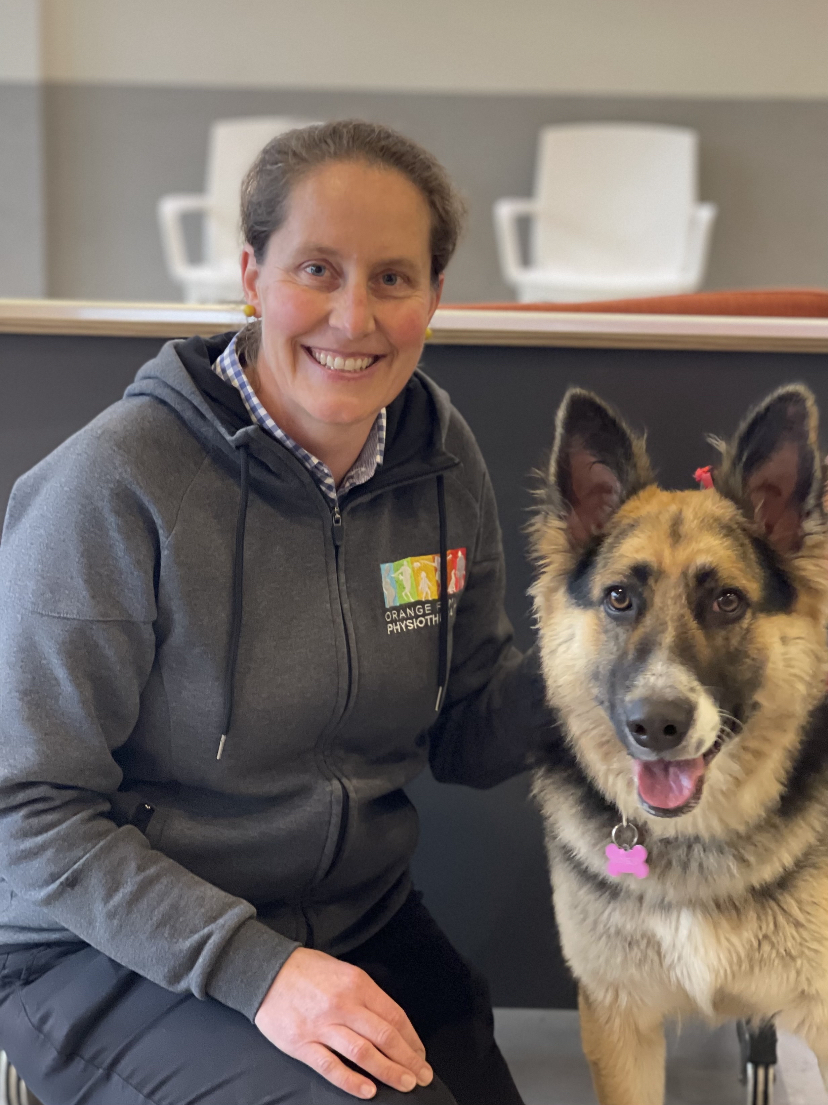 | | Meat the team: Erica, our physiotherapist | | | Erica grew up in Nashdale on her grandparent’s orchard, Thornbrook, where she returned with her husband Paul after joining the army and completing her Physiotherapy degree in Brisbane.
In 2004 she did a two-year Masters in Animal Physiotherapy while pregnant with her first child, Chloe.
“I could never work out whether I wanted to be a vet or a physio so when this Master’s degree turned up, I really wanted to do it.”
I set up Orange Family Physiotherapy in Orange and see some animals through that but it wasn’t until Genevieve from Orange Vet Hospital contacted me having discovered I was an animal physiotherapist that I started consulting at the practice.”
Erica mainly sees people for treatment through Orange Family Physiotherapy, but also loves working with animals one day a fortnight with Orange Vet Hospital.
“When we do treatments with humans, there’s a bio, social, psychological approach but with animals it’s more about the bio side of things,” Erica said. “For example, I saw a dachshund today who gets a sore back and comes in tight and in pain, but you treat the animal and you see the difference straight away. With humans their condition is often also tied up with the psychological aspect which can have it's challenges.”
Erica grew up with animals and still loves them.
“I always had horses and went to Pony Club, and we had dogs, and now still have dogs, guinea pigs and birds; we have everything at home.”
Since working with the Orange Vet Hospital team, Erica will have the opportunity to watch surgery and then treat post-op patients.
“To see the x-rays and talk to the surgeon about what they have done; it provides that professional approach to treatment.”
When not at work, Erica can be found at her beloved Thornbrook Orchard, Hillside Harvest, training for a triathlon or working with the Army Reserve.
“I still get quite involved with the army. I still enjoy it. I haven’t grown out of it yet!”
For more information or to book your appointment with Erica, call our friendly reception team! |
|
|
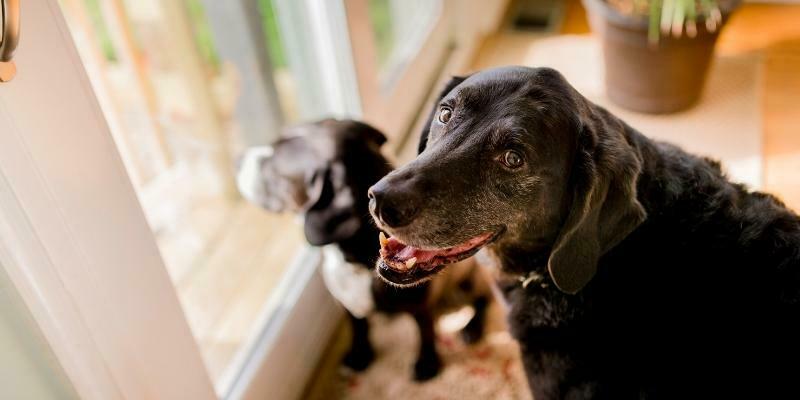 | | Mental health maintenance for senior pets | | | When it comes to quality of life in cats and dogs, mental health is just as important as physical health. Here are some practical ways you can help support your pet’s brain health and function as they age.
Environmental enrichment
Keeping older dogs and cats mentally active will help to slow any age-related brain deterioration – just like in people!
Providing your pet with a variety of mental challenges to solve is their version of a stimulating sudoku or crossword puzzle. Food puzzle toys or snuffle mats filled with exciting treats will encourage problem-solving and focus in your pet. If you search online, you can find ideas for DIY puzzle toys that you can create with leftover cardboard boxes and tubes, meaning you can provide your pet with an ever-changing array of brain-teasers! Likewise, Lickimat makes dog enrichment tools that can stimulate your dog's brain.
For older dogs, it’s also a great idea to try out some new walking routes, either in your neighbourhood or within a reasonable drive. Not only will your pet experience mentally-stimulating novel sights, sounds and smells, but they’ll also love having some fun bonding time with you. If mobility makes this challenging, there are many versions of dog prams that can help ailing legs.
Brain foods
Certain veterinary diets and supplements containing antioxidants and/or natural anti-inflammatories (such as omega fatty acids) are clinically-proven to help support brain health and function in pets, for example, the Hills Brain Aging b/d diet below. We can order this for you. These diets can also have other helpful effects, such as helping to maintain joint comfort.
Ask our veterinary team for more personalised advice on safe and effective brain health supplements for your pet.
Regular senior pet health checks
We advise that elderly pets see our vets for a thorough health check every 6-12 months, or anytime they demonstrate behavioural or physical health changes.
Behavioural changes can occur with age-related brain decline, or with other health problems (such as pain or high blood pressure), so are always best investigated and treated promptly.
For more information on supporting your pet’s mental health, consult our brainy veterinary team! |
|
|
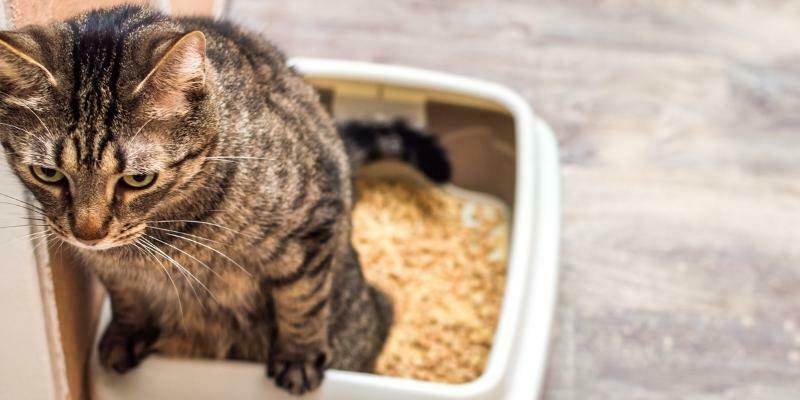 | | “Please hold” - urinary incontinence explained | | | Unfortunately, even pets who have previously had excellent toileting control can develop incontinence (urine or stool leakage) issues as they get older.
Significant urinary or faecal incontinence can have a negative effect on the quality of life of affected pets, as it may cause skin issues from constant wetness, and physical discomfort from lying in a messy bed. Some pets who have previously had impeccable toilet training may also feel quite anxious about accidentally “dirtying” their bedding.
Frequent pet incontinence can also have a negative impact upon human family members too, with the increased workload of having to constantly wash and dry the pet and their bedding (particularly with larger dogs).
Urinary incontinence in older pets can be caused by a number of issues. Bringing a urine sample to your appointment can really help alot. Some of the most common issues include:
- Urethral sphincter mechanism incompetence (USMI) – this is a “weak bladder” that is unable to hold in urine, and is most commonly seen in older, desexed female dogs
- Bladder issues, such cystitis (infection), bladder stones (hardened mineral accumulations) or tumours
- Excess production of urine, due to underlying health conditions such as diabetes or kidney disease
- Prostate problems in older male dogs
- Spinal problems, such as a bulging disc in the lower back, causing reduced nerve function to the bladder
Faecal incontinence in older pets may be caused by:
- Spinal problems or nerve problems causing reduced nerve function to the bowel
- Intestinal disorders, causing inflammation and/or loose stools, e.g. inflammatory bowel disease
- Diseases affecting the area around the anus, such as anal gland abscesses, tumours or hernias
If your pet shows any toileting troubles, we recommend a prompt assessment by our veterinary team. In many cases, we will be able to offer treatment for your pet’s condition. Our team wants to help your pet regain continence and comfort! |
|
|
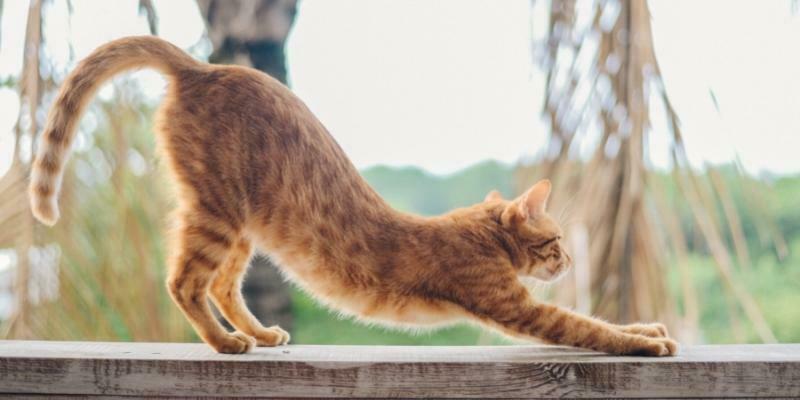 | | More than just the bare bones on joint care | | | Unfortunately, arthritis affects a significant proportion of middle-aged to elderly dogs and cats, particularly those born with developmental joint problems (such as hip dysplasia) or who have previously suffered a significant joint injury.
What is arthritis?
Arthritis is a condition where inflammation within affected joints causes progressive damage, leading to irreversible cartilage and bone deterioration.
Pets with early-stage arthritis will often show few outward signs (although they will likely experience some discomfort). However, as the condition advances, affected pets will suffer increasing joint pain, lameness and will show symptoms such as stiffness after rest, reluctance to climb stairs or jump up, or discomfort with handling or grooming.
How can we treat arthritis?
Unfortunately, arthritis can’t be “cured”. However, early and effective management can help to slow its progression and maintain comfort, mobility and quality of life in affected pets.
Arthritis is most safely and effectively managed with, what we call, a ‘multimodal approach’ which involves using a range of supportive measures to manage the condition.
Depending on the severity of the arthritis, and any other particular health issues or sensitivities a pet has, our vets will recommend a variety of supportive treatment options, which may include:
- Weight loss – keeping pets in slim, healthy body condition to reduce stress on joints and muscles
- Physical therapy – this involves gentle, regular strengthening exercises such as walking, hydrotherapy or pet physiotherapy sessions
- Medications – this includes non-steroidal anti-inflammatory drugs (e.g. carprofen, meloxicam) or other pain relief medications. We are very excited to welcome a new arthritis injection for cats - it is given once a month under the skin. This should really help our cats especially in our cold climes. For more information- click on the image below with the grey tabby cat.
- Nutraceuticals – this includes supplements that have natural anti-inflammatory effects and/or help to support cartilage repair (e.g. omega fatty acids, pentosan polysulphate), 4cyte gel (also available for cats and dogs)
Some pets may also benefit from alternative measures, such as acupuncture therapy. We are also pleased to welcome Erica as a physiotherapist to support pets with pain.
If you think your older pet is showing symptoms of joint discomfort, give us a call. We’ll help put the spring back in your pet’s step! |
|
|
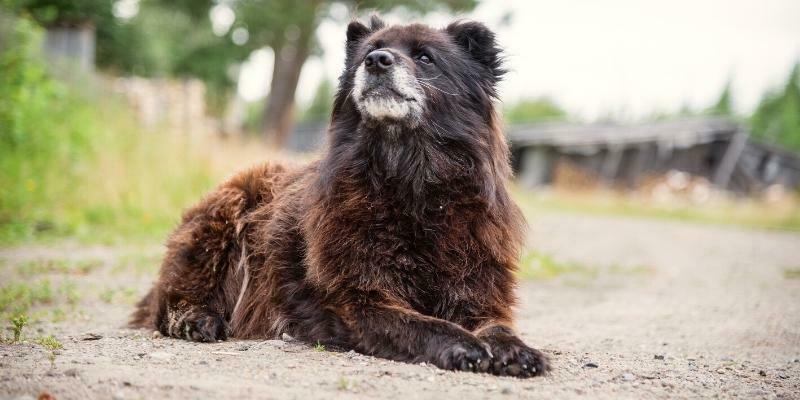 | | Cloud formations | | | As our pets age, some may develop a cloudy appearance to their eyes. Here are a few of the most common reasons for cloudy eyes in dogs.
Corneal changes
The cornea is the clear “window” portion of the eye, through which we can see the circular, coloured iris and black pupil.
A common cause of corneal clouding is an eye injury (such as an eye ulcer or penetrating foreign body) that causes inflammation and/or infection of the cornea. Pets with corneal damage require prompt assessment and treatment to help prevent severe eye damage.
Another common cause of corneal clouding is glaucoma, where there is a build-up of fluid and pressure within the eyeball. This can happen due to structural issues within the eye (which can be hereditary), or as a result of other diseases, such as eye inflammation. Glaucoma can rapidly cause permanent blindness in affected pets, not to mention severe pain, so it necessitates urgent treatment!
Lens changes
The lens is a clear disc-shaped structure that sits just behind the black pupil of the eye and allows us to focus our eyesight to varying distances.
The lens is usually transparent, but often becomes cloudy in older pets due to nuclear sclerosis; an age-related change where the lens becomes denser. Affected pets can show problems with close vision, such as difficulty spotting treats that you drop in front of them or hesitancy walking down stairs, particularly in low-light conditions.
However, dogs may also develop a cloudy appearance to their lenses with cataracts, which occurs due to changes in the water balance or protein structure inside the lens. This can occur as a hereditary issue, but also due to other underlying diseases, such as diabetes. Similar to nuclear sclerosis, pets with cataracts can show problems with close vision, such as difficulty spotting treats that you drop in front of them or hesitancy walking down stairs, particularly in low-light conditions.
Eye cloudiness can have a number of causes, many of which are best treated as promptly as possible to protect your dog’s sight. If you notice any changes to the appearance of your pet’s eyes, it’s best to seek prompt advice from our veterinary team. If we can't help, we can also refer you to a Veterinary eye specialist that visits regularly to Bathurst. If this is a service you would like, just ask us, We’ll give you clarity on any cloudy eye issues! |
|
|
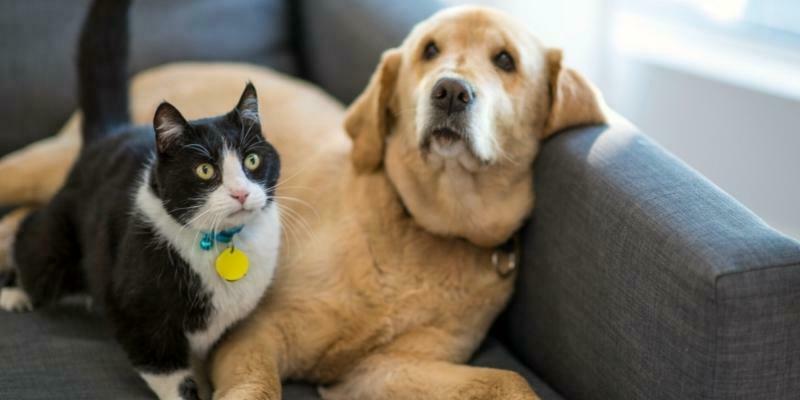 | | Supporting our seniors | | | As our beloved pets grow older, they may start to require our help with certain self-care tasks. Here are a few things that you might need to assist your senior pet with.
Grooming
Most elderly cats and dogs will require (and enjoy!) regular “beauty therapy” from their owners to help maintain their skin and coat health, due to a reduced capacity to groom themselves.
Short-haired pets will benefit from daily gentle brushing to remove loose hairs from their coat. Long-haired cats and dogs will often require deeper daily combing or brushing to prevent matting, or even the clipping of fur from their legs, tails or bodies to reduce grooming requirements entirely.
Most older pets will also need a nail trim every 6-8 weeks, due to a reduced ability to wear down their own nails. This will not only prevent painful overgrowth, but also improve their stability on slippery floors.
Going to the toilet
Sometimes, older pets require assistance getting to their toileting location, due to a reduction in night vision or reduced mobility.
If your pet has reduced vision, it can really help to place some night lights along their toileting path. It’s also best to ensure your pet’s toileting route has no stairs that they could fall down, and that all surfaces are non-slip. Cheap non-slip matting can be purchased from hardware stores and made into tracks.
If your pet is having mobility or strength issues, have a chat with our veterinarians about the best treatment options.
Sleep routines
Elderly pets can suffer from sleep disturbances due to age-related brain deterioration or other medical issues. If your pet is waking up inappropriately at night, it’s best to have us assess them. In many cases, we can diagnose and help manage the issue, so that you and your pet can catch some quality Zzz’s again!
Let us help your pet to age gracefully and comfortably. |
|
|
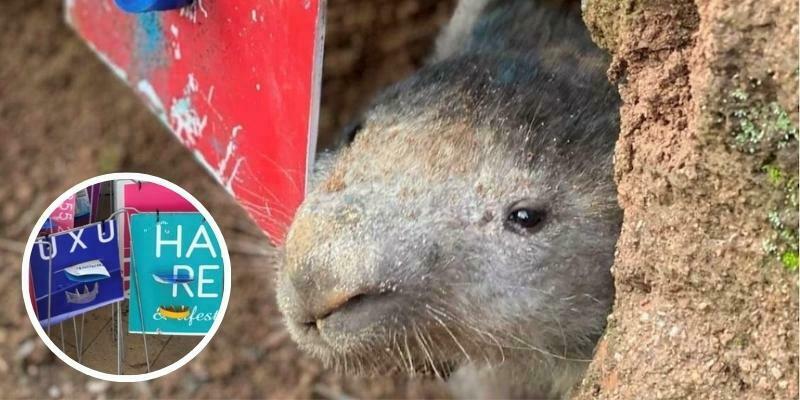 | | Animal News In Brief | | | Image source: the ABC
Election material borrowed for burrows
As it turns out, elections are good for more than just politics, as NSW wildlife volunteer group, Kanimbla Wombats, have demonstrated with their innovative re-use of election corflute signs to help treat mange disease in wombats. When parasitic mites get under a wombat’s skin, they cause an infection that can be fatal. This disease is known as mange, and is one of the biggest threats that wombats face. The wildlife group’s upcycled corflutes, dubbed ‘mange flaps’, work by sitting at the front of a wombat's burrow, tipping mange treatment onto their body as they waddle in and out. Why do election corflutes work perfectly as mange flaps? Well, as wombats tend to no-so-delicately charge into their burrow, the flap’s material must “be sturdy enough that it's not going to bend or be affected by the weather,” says Kanimbla Wombats co-founder, Melinda Kerr. After placing the mange flaps onto the burrows, the wildlife group monitor the wombats and top up the flaps with treatment each week for 12 weeks until “they're better and we're able to take that flap away.” If you spot a sick wombat in the wild, help your local wildlife organisation deliver treatments by taking a photo of the wombat and noting down its GPS coordinates. Signs of mange disease include wombats being unusually out during the day, hair-loss and thick crusty plaques on the body, including around their eyes and ears.
Read more about mange disease in wombats from the ABC.
-----
Rehomed and rehired: working dogs given a second chance
“A dog for every job and a job for every dog", that’s the philosophy behind NSW community service, Dogs4Jobs. Based in regional town Deniliquin, the animal welfare charity helps to rehome working breed dogs who’ve been given up by previous owners due to hard times. From natural disasters, such as floods, droughts and fires that affect farms, to owners who are strained by housing, work or simply don’t have the time and space that a working dog takes up, the Dogs4Jobs team take any working dog into their care. The charity relies on the help of volunteer foster carers, who take care of the dogs “until they're ready for adoption,” says Dogs4Jobs founder, Peri Chappell. The charity also provides pet owners with temporary care, support, training and educational programs on looking after their new four-legged friend. With 116 volunteers around the country, Dogs4Jobs have already managed to rehome 186 working dogs to safe, new, happy homes.
Read more about the Dogs4Jobs from the ABC.
-----
Meet Australia’s own Ace Ventura team
Doubling down on the criminals of the pet thieving world is Sydney-based business, Arthur & Co. Pet Concierge. Run by a team of specialists around Australia, including former police officers, the pet detective service helps to retrieve lost or stolen pets and return them to their rightful owners. The pet detectives are able to skillfully hunt down missing pets with the help of social media, tracking dogs, drones and a robotic device dubbed ‘Mars Rover Jnr’ that searches in hard-to-reach places, such as pipes. With over 20,000 followers, Arthur & Co. Pet Concierge have come a long way since their beginning in 2017, helping furry friends around the country return home at an approximate 80% success rate. The business’s name comes from the founder’s own furry friend, Arthur the dachshund, who was trained as a tracking dog by the founder herself. When pets go missing, one of the first things the pet detectives ask owners is, ‘is your animal microchipped?’ The best way to ensure that you can quickly find your pet if they go missing is to make certain that their microchip is always up-to-date with your current contact details. If you’re not sure if your pet is microchipped, or which contact details are currently on file, contact us to find out!
Read more about the pet detectives from The Age. |
|
|
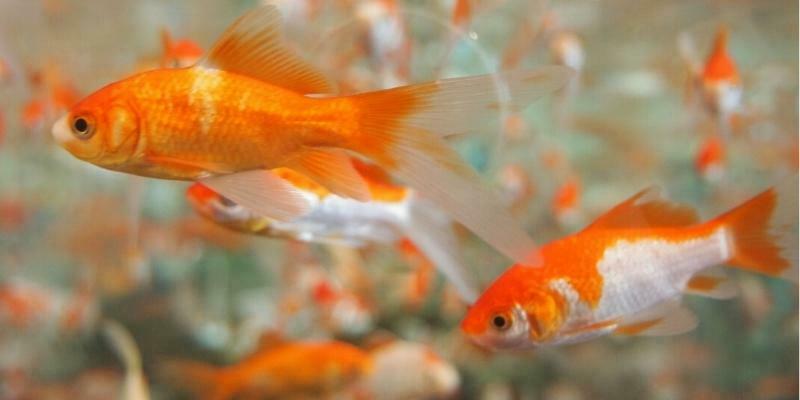 | | Goldfish putting aquatic biodiversity on “fin” ice | | | Image source: Queen's University Belfast
While some might think that releasing goldfish is a compassionate way of setting them free, what is often not considered are the impacts that these little swimmers can have on our rivers, lakes and oceans, or the other fish that call these places home.
Recent research from Queen’s University Belfast has demonstrated that goldfish are more destructive than we’d think. In fact, the little orange fish we commonly call pets are deemed one of the world’s most invasive species.
Since their domestication in East Asia over 1,000 years ago, goldfish have been popping up all over the globe as ‘easy-care’ pets.
The appeal of goldfish comes from their tolerance to various conditions such as temperature, light, water and nutrients. Although these may be advantageous for pet owners, when released into wild waters, they can impact surrounding biodiversity everywhere.
From the study’s findings, goldfish were deemed voracious, consuming more than their fair share of food that native species depend on, and appearing braver, less risk-averse and more likely to prey on surrounding fish. As the study’s lead author, Dr James Dickey describes, “they combine insatiable appetites with bold behaviour.”
Their aggressive tendency to attack and force native fish to compete for resources aren’t the only consequences of releasing goldfish, either. When released into the wild, goldfish can carry parasites from all over the world and spread diseases into any ecosystem they end up in. They can also destroy native fish habitats and breed with other fish, causing an ongoing burden of invasive species.
As invasive species prove to be one of the dominant causes of biodiversity loss globally, it’s time that the ecological, economic, social and health impacts that these little fishies have on our fragile aquatic ecosystems are made known, so that goldfish are kept safe in their tanks and never, under any circumstance, released into natural habitats.
Read more about the effects of goldfish on aquatic ecosystems from Queen's University Belfast and NeoBiota. |
|
|
This email contains comments of a general nature only and is not intended to be a substitute for professional veterinary advice. It should not be relied on as the basis for whether you do or don't do anything.
All content © PetPack 2022 |
|
|
This email was sent to:
email@example.com
Orange Veterinary Hospital
57 Molong Rd
Orange, NSW 2800
|
|
|
|